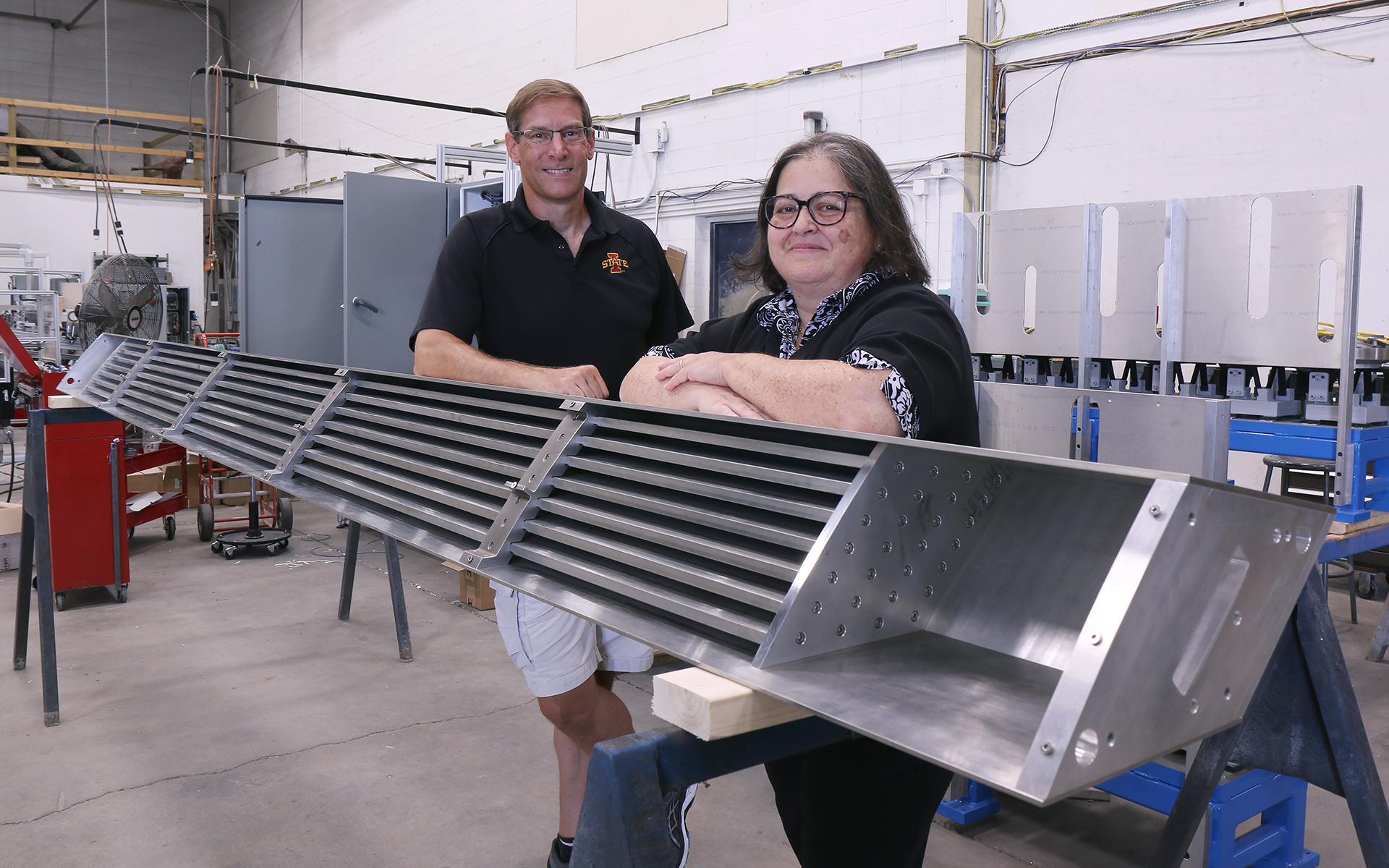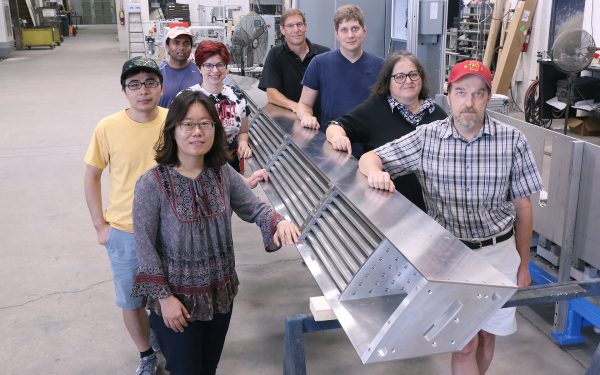
It’s an information-filled and exciting time to be a nuclear physicist.
“When I was a graduate student, nobody was really thinking that we could learn a lot about the details of how quarks and gluons interact by colliding nuclei,” John Lajoie, professor of physics and astronomy, said. “Now we’re getting so much information out of that, that we’re struggling to understand how it all fits together.”
Information is pouring into nuclear physics from the results of experiments that use sophisticated machines to collide protons, subatomic particles occurring in the nuclei of all atoms, or heavy ions, nuclei weighing more than helium with a charge, with the goal of learning more about the quarks that make up the protons and neutrons.
Previous research has shown that quarks are always bound together into protons and neutrons. They are held together by strong force-particles called gluons. But by colliding nuclei together, a brief plasma state is created in which the quarks are unbound. Scientists believe this state is similar to the conditions when the universe was only a few microseconds old.
Quarks in this plasma state have surprising characteristics.
“It was nothing like what we expected,” Lajoie said. “We thought it would be like a hot gas of quarks and gluons. But nothing could be different from the truth. It turns out to behave much more like a liquid and, in fact, a liquid that flows with almost no friction or viscosity, a nearly perfect fluid.”
The observation opened up new questions such as how the quarks and gluons are interacting in this fluid, especially in a way that is strong but still allows the fluid to flow with very little friction.
Marzia Rosati, professor in physics and astronomy and member of the same lab group, studies how heavy objects travel in the plasma to learn more about the fluid.
“Since the fluid lives a very short time, we cannot actually observe the fluid itself so we can only study how it modifies the objects that come out of the fluid,” she said. “One analogy I often use is it’s like looking at a car wreck when you only have the debris. The police are trying to figure out how fast you were going by looking at the track that you leave on the pavement, how far away the debris were scattered, and that’s very similar to what we do in nuclear physics where we look at the debris coming out of the collision.”

Lajoie and Rosati’s lab group also currently includes two postdoctoral associates, one senior scientist and six graduate students. Their research has largely used a detector called PHENIX (Pioneering High Energy Nuclear Interaction eXperiment) at the Brookhaven National Laboratory in Upton, New York. They are now working on the development of a new detector to take the place of PHENIX at Brookhaven National Laboratory that can answer even more detailed questions about the components of nuclei.
“We’re beginning to focus in now on a much more refined set of questions that we need to ask the next generation of experiments,” Lajoie said.
The new detector, called Super Phenix (sPHENIX), will be able to collect more detailed data in an effort to answer these questions.
For example, the new machine will detect detailed data about “jets.” A jet, explained Lajoie, is a trail of particles left in the wake of a quark that has shot out of the plasma created in nuclear collisions when a quark collides with another quark or a gluon. When it leaves the plasma it cannot remain an unbound quark and breaks up into several small particles. By measuring these particles, information about the quark itself can be inferred.
Analyzing quarks through reconstructing these jets was the focus of a research poster Lajoie and Songkyo Lee, a postdoctoral research associate in physics and astronomy, brought to the Quark Matter Conference in May. The conference brings together the leaders in nuclear physics research to meet and discuss the latest experiments and data from the world’s top collider facilities.
“How you measure the jets is a real function of what your detector can tell you,” Lajoie said. “We’re building a new detector, and we’re really trying to be very detailed as we design this detector in terms of how the information that detector gives us will allow us to go back to the kinds of things that we’re trying to measure.”
Rosati and Sookhyun Lee, a postdoctoral research associate in physics and astronomy, also attended the conference and presented a poster on a J/psi particle, which is made up of two particular kinds of quarks. This particle has a spin and magnetic field. Rosati and Lee’s research observes the decay of this particle into two electrons, which may help understand how the particle is formed.
“On a fundamental level we want to understand all the steps that happened in the production,” Rosati said. “One can reconstruct what angle things are coming out at and the polarization and relate that to exactly how they were formed during the collision.”
Working to understand the fundamental forces and particles of the universe fascinates both Lajoie and Rosati and the information to study is only growing.
“It’s one of the big unknowns, and we now have machines and computers that are big enough that we can actually study this kind of interaction,” Rosati said. “Now that we have an accelerator that goes to higher energy than we did before we can actually probe very short distances more accurately and so it’s sort of like understanding a new fundamental problem.”
Physicists, said Lajoie, like to make things simple. But that doesn’t stop them from grappling with complex problems. It was the complexity that drew Lajoie to the research and that continues to maintain his interest.
“How do I wrap my head around this problem in a way that all of a sudden I see the connections?” he said. “I’m still trying to do that and probably won’t achieve it before I die. But grappling with a hard problem, and this is a hard problem, makes it very attractive.”